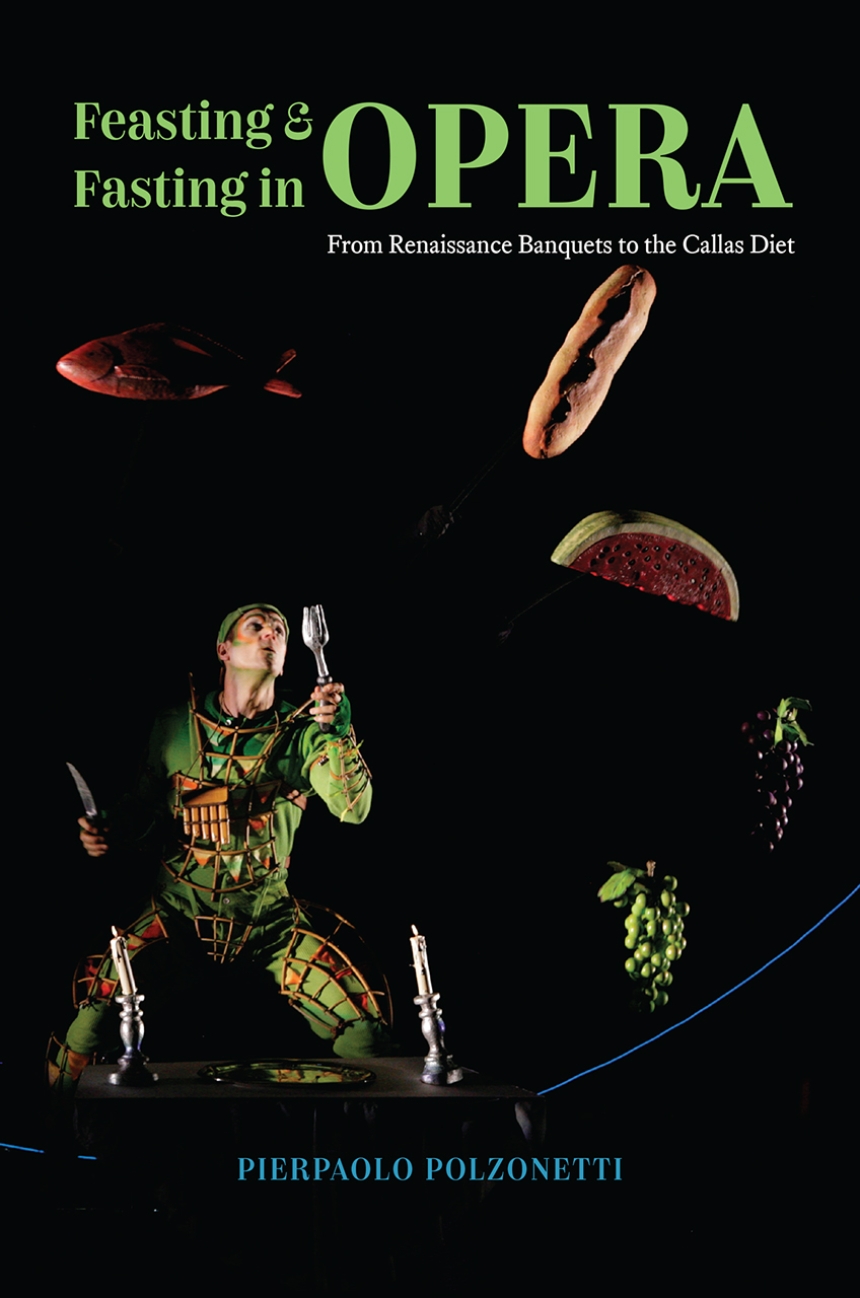Feasting and Fasting in Opera
From Renaissance Banquets to the Callas Diet
9780226804958
9780226805009
Feasting and Fasting in Opera
From Renaissance Banquets to the Callas Diet
Feasting and Fasting in Opera shows that the consumption of food and drink is an essential component of opera, both on and off stage.
In this book, opera scholar Pierpaolo Polzonetti explores how convivial culture shaped the birth of opera and opera-going rituals until the mid-nineteenth century, when eating and drinking at the opera house were still common. Through analyses of convivial scenes in operas, the book also shows how the consumption of food and drink, and sharing or the refusal to do so, define characters’ identity and relationships.
Feasting and Fasting in Opera moves chronologically from around 1480 to the middle of the nineteenth century, when Wagner’s operatic reforms banished refreshments during the performance and mandated a darkened auditorium and absorbed listening. The book focuses on questions of comedy, pleasure, embodiment, and indulgence—looking at fasting, poisoning, food disorders, body types, diet, and social, ethnic, and gender identities—in both tragic and comic operas from Monteverdi to Puccini. Polzonetti also sheds new light on the diet Maria Callas underwent in preparation for her famous performance as Violetta, the consumptive heroine of Verdi’s La traviata. Neither food lovers nor opera scholars will want to miss Polzonetti’s page-turning and imaginative book.
In this book, opera scholar Pierpaolo Polzonetti explores how convivial culture shaped the birth of opera and opera-going rituals until the mid-nineteenth century, when eating and drinking at the opera house were still common. Through analyses of convivial scenes in operas, the book also shows how the consumption of food and drink, and sharing or the refusal to do so, define characters’ identity and relationships.
Feasting and Fasting in Opera moves chronologically from around 1480 to the middle of the nineteenth century, when Wagner’s operatic reforms banished refreshments during the performance and mandated a darkened auditorium and absorbed listening. The book focuses on questions of comedy, pleasure, embodiment, and indulgence—looking at fasting, poisoning, food disorders, body types, diet, and social, ethnic, and gender identities—in both tragic and comic operas from Monteverdi to Puccini. Polzonetti also sheds new light on the diet Maria Callas underwent in preparation for her famous performance as Violetta, the consumptive heroine of Verdi’s La traviata. Neither food lovers nor opera scholars will want to miss Polzonetti’s page-turning and imaginative book.
Reviews
Table of Contents
Prologue: What Is Food Doing in Opera? vii
Part I Convivial Beginnings
1 The Symposium and the Birth of Opera 000
2 The Renaissance Banquet as Multimedia Art 000
3 Orpheus at the Cardinal’s Table 000
4 Eating at the Opera House
Part II “Tastes Funny”: Tragic and Comic Meals from Monteverdi to Mozart
5 Comedy as Embodiment in Monteverdi and Mozart 000
6 The Insatiable: Tyrants and Libertines 000
7 Indulging in Comic Opera: Gastronomy as Identity 000
Part III The Effects of Feasting and Fasting
8 Coffee and Chocolate from Bach to Puccini 000
9 Verdi and the Laws of Gastromusicology 000
10 The Callas Diet 000
Acknowledgments 000
Notes 000
Bibliography 000
Index 000
Part I Convivial Beginnings
1 The Symposium and the Birth of Opera 000
2 The Renaissance Banquet as Multimedia Art 000
3 Orpheus at the Cardinal’s Table 000
4 Eating at the Opera House
Part II “Tastes Funny”: Tragic and Comic Meals from Monteverdi to Mozart
5 Comedy as Embodiment in Monteverdi and Mozart 000
6 The Insatiable: Tyrants and Libertines 000
7 Indulging in Comic Opera: Gastronomy as Identity 000
Part III The Effects of Feasting and Fasting
8 Coffee and Chocolate from Bach to Puccini 000
9 Verdi and the Laws of Gastromusicology 000
10 The Callas Diet 000
Acknowledgments 000
Notes 000
Bibliography 000
Index 000
